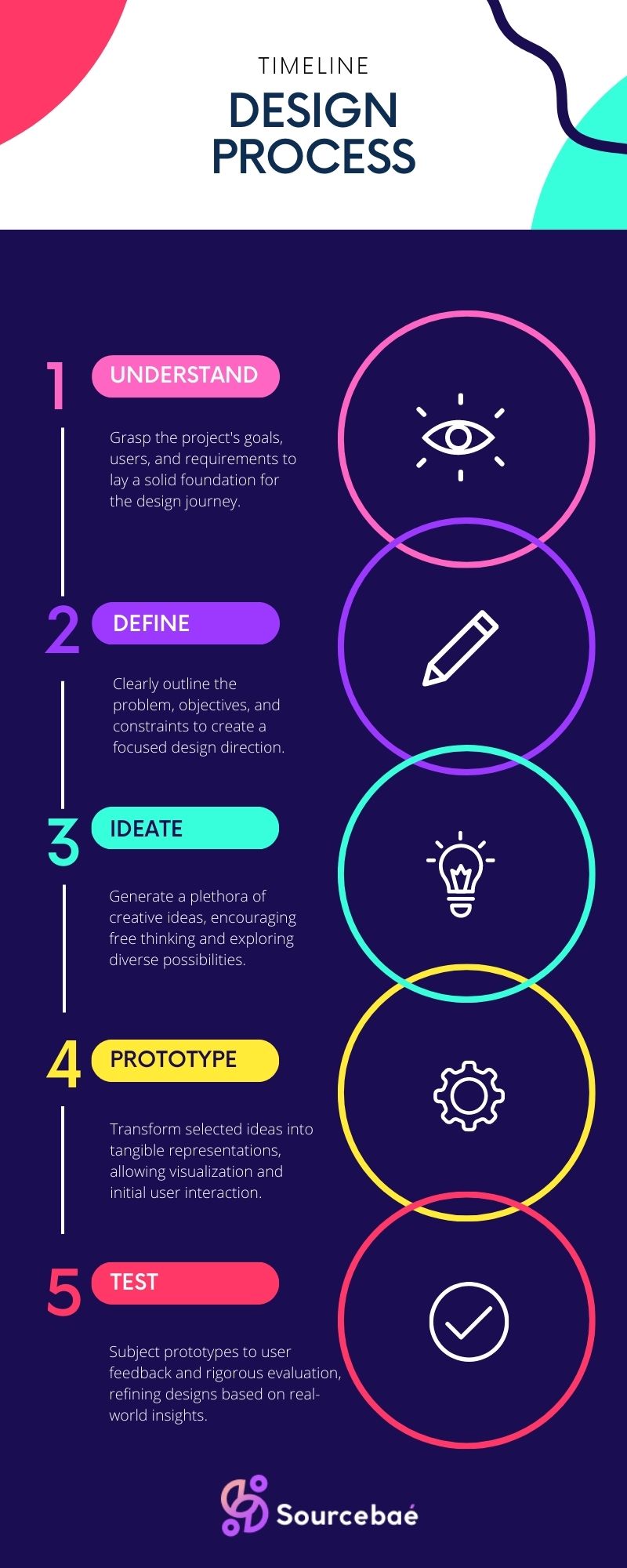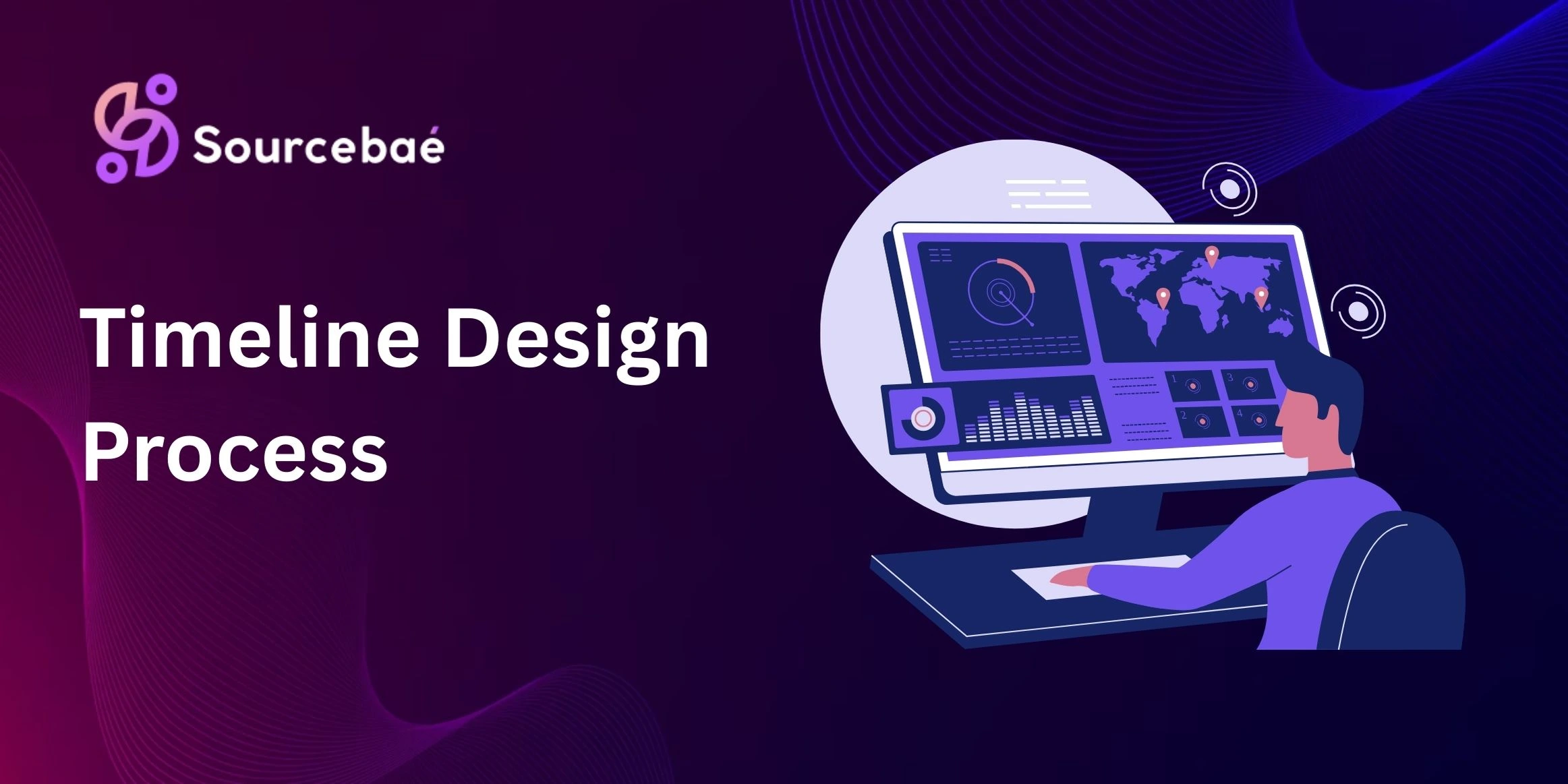In the realm of project management, a well-crafted timeline is the backbone of success. The timeline design process is not just about listing dates; it’s a strategic endeavour that requires meticulous planning and execution.
Whether you’re overseeing a business project, organizing an event, or managing a construction endeavour, understanding how to create a timeline that fosters efficiency and accomplishment is paramount.
This article dives deep into the intricacies of the timeline design process, providing actionable insights and expert guidance to ensure your projects stay on track and achieve their goals.
Timeline Design Process

Crafting a timeline that aligns with your project’s goals and constraints involves several crucial steps:
Defining Project Scope and Goals
Before delving into timelines, it’s imperative to have a clear understanding of your project’s scope and objectives. What are you aiming to achieve? What are the key deliverables? Define these aspects comprehensively to lay a strong foundation for your timeline.
Identifying Key Milestones
Milestones act as anchors in your timeline. They signify critical points in your project’s journey. These could include product development phases, budget approvals, prototype testing, etc. Identifying milestones early helps in setting up a structured timeline.
Estimating Task Durations
Accurate time estimation is at the core of a functional timeline. Break down your project into tasks and estimate the time each task will take. This requires a keen understanding of the complexity of each task and the resources available.
Sequencing Tasks
Tasks often depend on each other. Some tasks can only start when others finish. Sequence your tasks in a logical order to ensure a smooth flow of work. This prevents bottlenecks and keeps the project moving seamlessly.
Allocating Resources
Resources, be it human resources, finances, or equipment, play a pivotal role in adhering to timelines. Assign resources to each task considering their availability and expertise.
Building Contingency Time
The unexpected is inevitable in any project. Build contingency time into your timeline to accommodate unforeseen delays or issues. This prevents your timeline from derailing completely due to minor setbacks.
Creating the Initial Timeline
With all the aforementioned information, create the initial version of your timeline. This serves as a starting point for further refinement.
Gathering Feedback
Share the initial timeline with stakeholders, team members, and experts. Their feedback can provide valuable insights and help in identifying any gaps or oversights.
Refining and Finalizing
Incorporate the feedback received and refine your timeline. Make sure it’s realistic and achievable. This refined version is the one you’ll be working with.
Setting Up Monitoring Mechanisms
A timeline isn’t static; it requires active monitoring. Implement mechanisms to track progress and identify deviations from the planned schedule.
Managing Changes
Changes are inevitable during a project’s lifecycle. Have a robust process in place for managing change requests and assessing their impact on the timeline.
Continuous Communication
Maintain open and transparent communication with all stakeholders throughout the project. This fosters a shared understanding of the timeline and helps manage expectations.
Executing and Adhering
As the project kicks off, stick to the timeline rigorously. Regularly compare actual progress with the planned timeline and take corrective actions if needed.
Handling Delays
In case of delays, assess the reasons behind them. If they are within control, take corrective measures. If not, communicate the new timeline clearly to stakeholders.
Ensuring Quality at Every Stage
Quality should never be compromised for speed. Ensure that each task is executed with the highest standards, even if it means slight adjustments to the timeline.
Celebrating Milestones
When milestones are achieved, take the time to celebrate small victories. This boosts morale and maintains enthusiasm throughout the project.
FAQs
Q: How can I estimate task durations accurately?
A: To estimate task durations accurately, consider historical data from similar projects, consult with experts, and break tasks into smaller subtasks for better analysis.
Q: What should I do if a major unexpected delay occurs?
A: In case of a major unexpected delay, assess its impact on the entire project and communicate transparently with stakeholders. Consider reallocating resources or adjusting tasks if feasible.
Q: How do milestones differ from tasks?
A: Milestones are significant achievements or events that mark the completion of a phase, while tasks are actionable steps that lead to achieving those milestones.
Q: What’s the significance of building contingency time?
A: Contingency time acts as a safety net against unexpected delays. It ensures that minor setbacks don’t derail your entire timeline.
Q: How often should I update stakeholders about the timeline’s progress?
A: Regular updates are crucial. Depending on the project’s size and duration, consider weekly or bi-weekly updates to keep stakeholders informed.
Q: What’s the best way to manage changes without disrupting the timeline?
A: Implement a formal change request process. Evaluate each change’s impact on the timeline and prioritize them based on urgency and importance.
Conclusion
Crafting an effective timeline is an art that combines strategic planning, meticulous estimation, and vigilant execution. The timeline design process outlined in this article equips you with the knowledge and insights needed to create timelines that drive successful project outcomes.
From setting milestones to managing unexpected delays, every step contributes to the overall efficiency and success of your project. Remember, a well-designed timeline not only guides your project but also reflects your ability to navigate complexities and deliver results.






